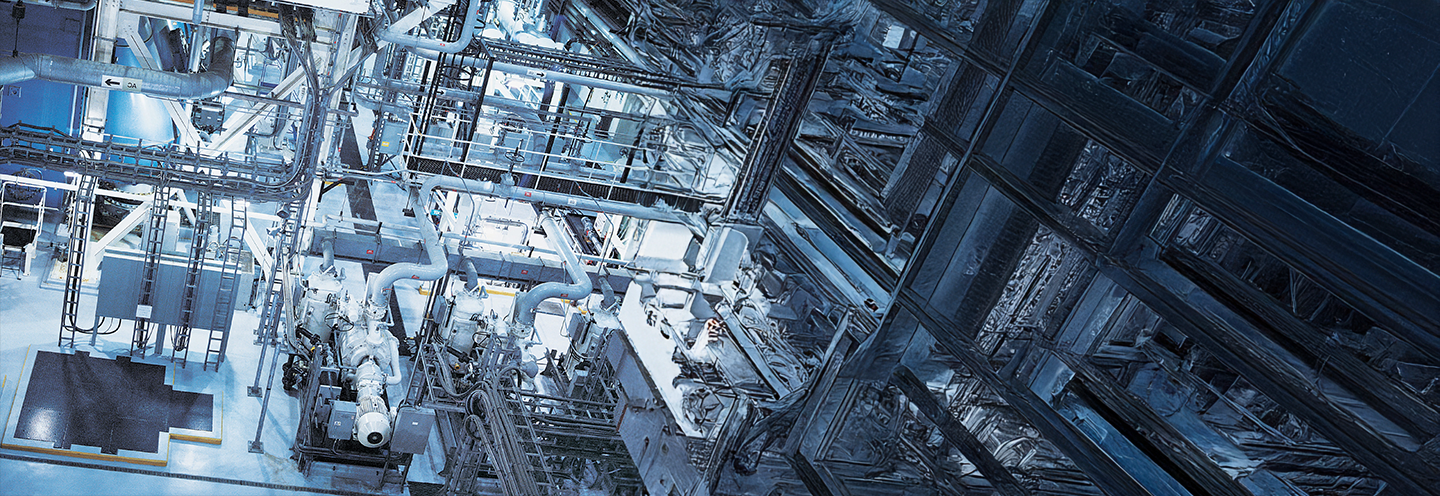Taking lightning-fast decisions is the number one need for frontline troops when operating in conflict-torn areas. Gathering accurate intel on their surroundings is key to choosing the appropriate action. The name of the game is the ability to see over major distances (several miles) whatever the weather conditions, while minimizing disruption from the conditions hampering the battlefield, such as smoke, dust, fires, explosions and reflected sunlight.
The solution lies in cutting-edge equipment with embedded infrared cameras. Cooled detectors are an ideal match for combat-ready applications with their highly specific set of technical criteria.
This article takes an in-depth look at three criteria that explain why cooled sensors are so effective during on-the-ground military operations.
1- Primary objective - assess the camera's range
The range of a camera (its ability to produce an image of a target according to different minimum resolutions for detecting, recognizing or identifying that target) comes firmly at the top of the criteria list when comparing systems.
For given weather conditions and a specific wavelength (which will define the level of atmospheric transmission) and for a defined target (people, vehicles or other objects presenting a given temperature difference in relation to their surroundings), the first-order approximation for the range of a thermal camera is based on the performance of its two main components, i.e. the optical system and the infrared detector.
A word about the range:
- The performance of the optical system is primarily driven by its optical transfer function (OTF), which represents its ability to project the high spatial frequencies from the scene. The narrower the optical system (small diameter and large f/# aperture number), the more restricted the camera's OTF and range will be.
- The performance of the infrared detector is mainly influenced by its resolution (number of pixels), sensitivity (or NETD), spectral band (MWIR or LWIR, depending on the level of atmospheric transmission) and modulation transfer function (MTF of the pixel), which is combined with the OTF.
When choosing a cooled infrared detector that ticks all the boxes in the military mission brief, consideration will also need to be given to a number of other criteria, including:
- Frame rate (detectors offering a high frequency rate for capturing and displaying images will be more effective at analyzing and identifying fast-moving targets).
- Power draw of the cooler (more electricity will be consumed by an LWIR detector cooled to a lower temperature than a MWIR detector), which will affect the operating time of battery-powered portable systems.
- Reliability or MTTF (mean time to failure): average time before a device fails according to a given mission profile, or the duration after which two thirds of the in-service devices have failed. The choice of cooler (the only component with moving parts that are subject to wear) and the operating temperature range for the detector are design-critical.
Read on and find out why and how LYNRED is now recognized as a premium quality supplier in the infrared sector.

2- A closer look at the three main performance criteria for a cooled infrared detector
. Sensitivity or NETD (Noise Equivalent Temperature Difference)
The NETD is expressed in thousands of a degree (mK) and refers to the smallest temperature difference that a detector is capable of resolving. It is equal to a signal-to-noise ratio (S/N) of one. In other words, when the temperature difference is equal to the NETD (on the detector input), the variation in the detector's output signal corresponds to its noise.
The lower the NETD, the more sensitive the detector and the greater the camera's range, since a faraway target will generate a very low temperature difference in the camera corresponding to the signal that has been highly attenuated by the atmosphere.
In case of mobile applications, such as binoculars, the NETD of an MWIR detector tends to sit between 25 and 30 mK, whereas the NETD of an LWIR detector for a tank's fire-control system will hover around the 15 mK mark.
Therefore, the NETD can be thought of as the infrared equivalent to contrast in visible light imaging. It will play a mission-critical role in scenes featuring a low level of thermal contrast, i.e. where all the objects are roughly at the same temperature, like a landscape.
Note that there are no standards or universally accepted methods for measuring the NETD. Make sure that the datasheet specifies the measurement method used (mainly the scene temperature and the detector's fill factor). For example, the NETD for the cooled components manufactured by LYNRED, the French expert in infrared detectors, tends to be measured in the mid-infrared region in front of a black body at 300 K.
. Spectral band
When it comes to choosing between the LWIR and MWIR spectral bands, the decision will be dictated by the required range and the mission conditions. Atmospheric transmissions will vary tremendously between the LWIR and MWIR bands depending on whether troops are operating in warm humid climates or cold dry environments, which could be a deal-breaker or deal-clincher for either band.
In case of very long-distance surveillance / reconnaissance systems, water and CO2 in the air will create a much higher level of attenuation in the LWIR band, which will tip the scales in favor of the MWIR band for maintaining effective ranges with such systems. Similarly, an MWIR detector is the way to go for compact portable systems such as binoculars, which require a low power draw, since climbing higher into the LWIR spectral band increases the need to cool the cryogenic low temperature detector, which will place additional stress on the cooler (greater power consumption, larger and more powerful compressor, etc.).
Nevertheless, LWIR cooled detectors boast a number of advantages over MWIR. According to Planck's law, they will deliver superior performance when imaging both low-contrast and cold scenes (‑10°C to -40°C) during the winter and in the Arctic. They will be more resistant to sun glare and fires/explosions, which gives them the upper hand over MWIR systems in the battlefield for equipping armored vehicles. Their high degree of sensitivity ensures fast integration times and delivers images at higher frequencies than the MWIR band.
. MTF
Pixel MTF is an important criterion for measuring a pixel's ability to transcribe ("transfer") the contrast of a scene imaged by the lens of the complete system in the focal plane. MTF is a function of the spatial frequency f for the image of the scene projected in the focal plane. Spatial frequencies are inverse spatial coordinates in the image plane. They are expressed in mm-1.
Now that you have read this detailed description of the main technical data for cooled detectors, which draws on the in-depth knowledge of LYNRED's product expert Antoine Sandanassamy, you will have a clearer understanding of the reasons why cooled detectors are especially suited to on-the-ground military operations.
If you would like to find out more about LYNRED, its commitments to driving research and innovation, its partnerships with academia and the scientific community, and its ongoing determination to achieve industrial excellence, we would advise you to download the company's free factsheet, which you can also use to contact one of our qualified experts.
Read on and find out why and how LYNRED is now recognized as a premium quality supplier in the infrared sector.












